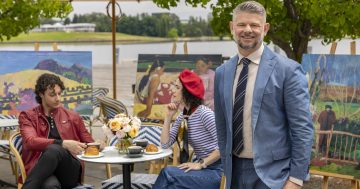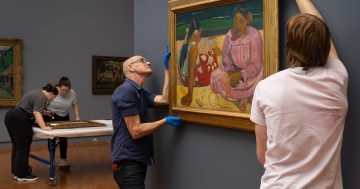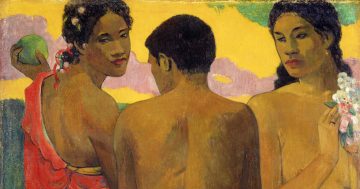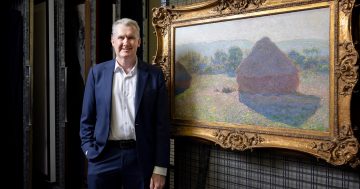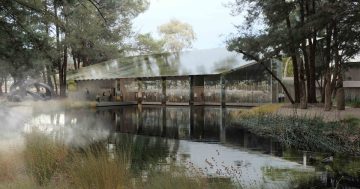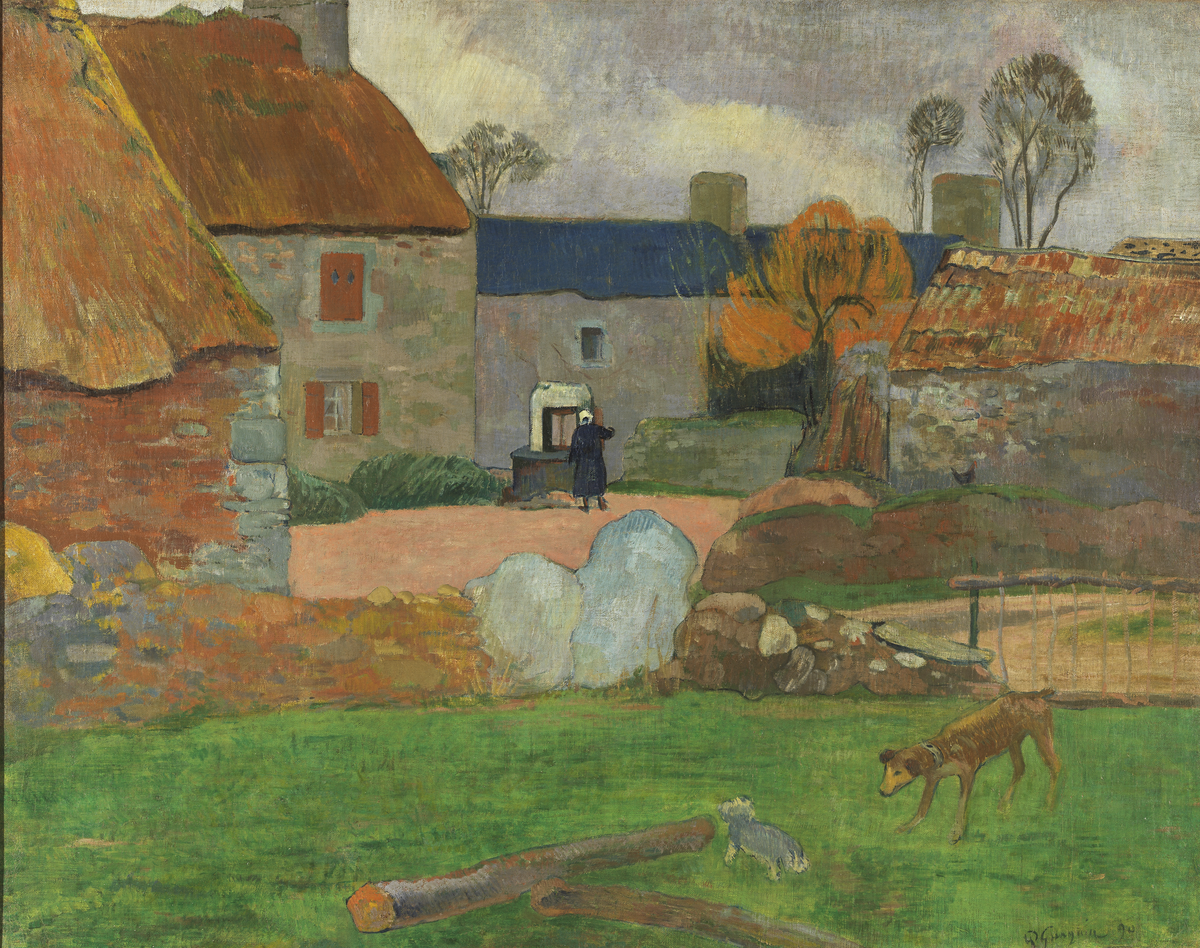
The National Gallery’s latest acquisition, Gauguin’s Ferme au Pouldu (The blue roof or Farm at Le Pouldu) 1890. It is on show in the current exhibition, Gauguin’s World: Tōna Iho, Tōna Ao. Photo: NGA.
In a first for an Australian public art institution, the National Gallery of Australia (NGA) has paid $9.8 million for a painting by post-Impressionist master Paul Gauguin – the 1890 Farm at Le Pouldu (The Blue Roof) .
The work will add to what the NGA describes as its “anchor works”, other significant pieces in the collection from the past century that range from artists such as Claude Monet to Jackson Pollock.
The painting, among a small number of works painted by Gauguin at Le Pouldu on the Breton coast, is currently on show in the Canberra exhibition, Gauguin’s World: Tōna Iho, Tōna Ao.
The exhibition traces Gauguin’s artistic journey and global travel – from his Impressionist beginnings in 1873 to his final destination in French Polynesia.
An NGA spokesperson said the work was acquired with the assistance of the National Gallery Foundation.
Director of the NGA, Dr Nick Mitzevich, described The Farm at Le Pouldu as an important acquisition for the national collection.
“It captures a key point in art history – the moment when the artist emerged as an intensely original master, taking Impressionist colour schemes and transcending them to be bolder and more daring,” he said.
“As the National Gallery, we aim to present Australian audiences with access to world-class art that inspires and educates.
“This work by Gauguin adds to the anchor works in the national collection from the past 100 years including by artists such as Claude Monet and Mary Cassatt through to Jackson Pollock and Louise Bourgeois.”
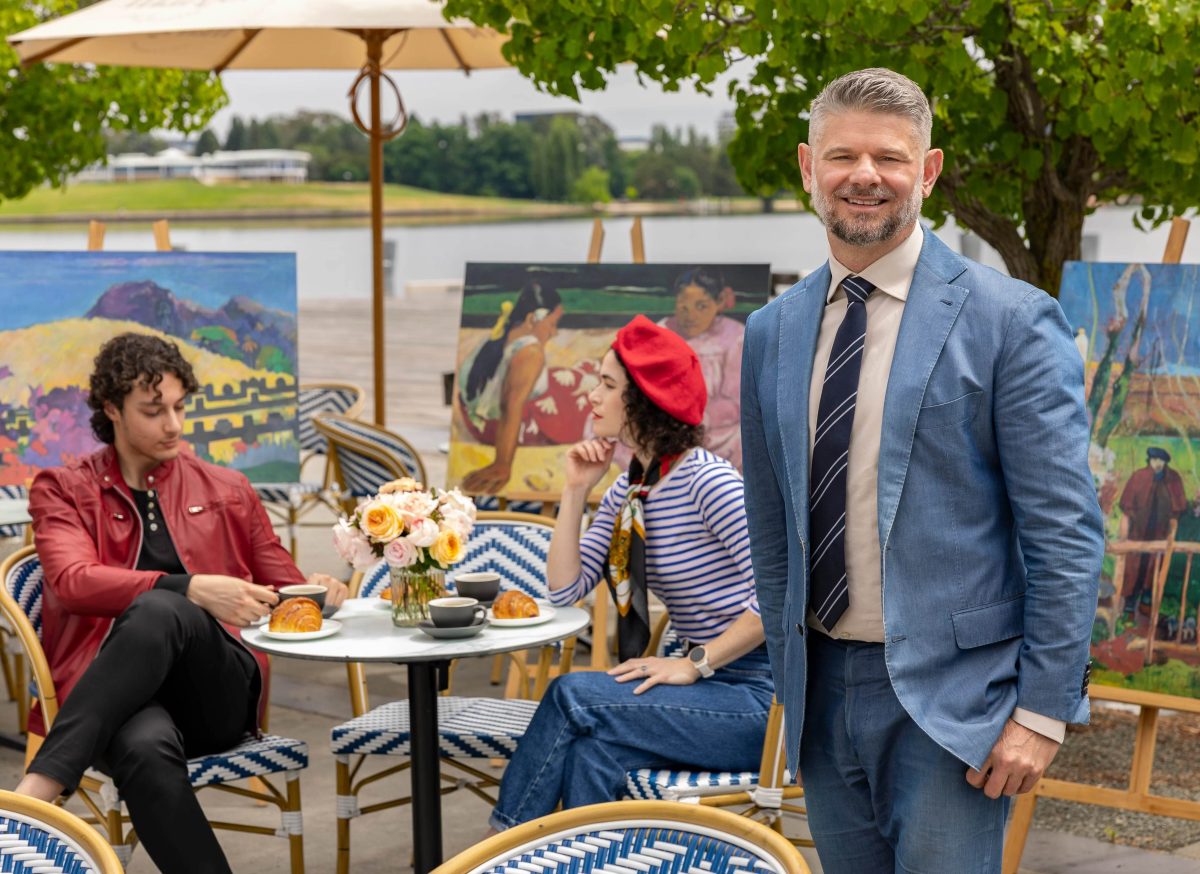
NGA director Nick Mitzevich launches the Gauguin exhibition in true French style last year. Photo: Sam Cooper, NGA.
He said the NGA was grateful for the generosity of the National Gallery Foundation which made the acquisition possible.
In describing the work, the NGA spokesperson said: “At the centre of the composition, a woman is shown drawing water from a well, framed and almost subsumed by the rustic farm buildings.
“Gauguin varied his brushstrokes to capture a sense of the rough surfaces of the stone buildings, thatched roofs and the surrounding vegetation. The composition centres on the figure of the woman, dressed in dark blue with a white cap, and the well.
“A distinctive blue roof is characteristic of the rural architecture in Le Pouldu, and two dogs in the foreground provide further interest.”
The NGA also holds seven prints by Gauguin in its collection, the first a gift from renowned Australian artist Sir Russell Drysdale in 1974.
After the exhibiton ends in October, the new acquisition will go on show in the permanent collection galleries.
“Since his death in 1903, Gauguin has left two enduring and conflicting legacies – his art and himself,” the spokesperson said.
“Like other contemporary and historic artists, Gauguin’s life and art have increasingly and appropriately been debated here and around the world. In today’s context, Gauguin’s interactions in Polynesia in the later part of the 19th century would not be accepted and are recognised as such.”
Gauguin’s World: Tōna Iho, Tōna Ao is on exhibition at the NGA, Canberra, until 7 October 2024. Open daily from 10 am to 5 pm.












